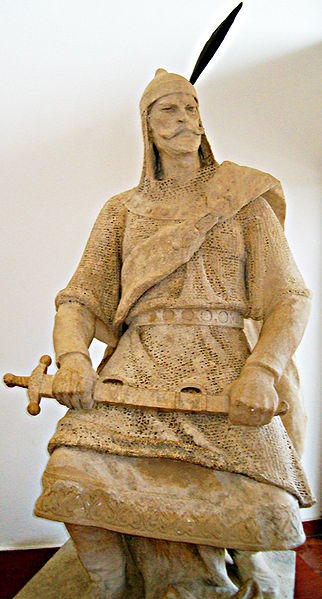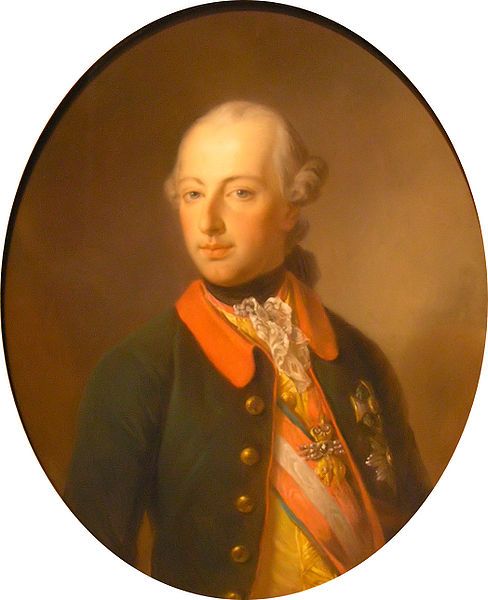Horse Breeding in Hungary
Hungary was always of large interest because it was one of the most important horse breeding countries in the south-eastern part of Middle Europe. Up into the near past, the local development is exemplary for the entire region. Until the motorization of agriculture, transportation and the military, the Hungarian horse breeding sector was very important for the economy. During the Hungarian-Austrian Monarchy Hungary was the greatest horse supplier of the Empire; all the important breeding centers were situated here.
The first organized Hungarian stud was founded in 857 by assignment of Árpád on the island “Csepel” now a rural of Budapest. “Csepel” has its name from the chieftain “Csepel” who ruled in those days. On this island only the noblest horses with Persian and Turkmen blood were collected for breeding purposes. These horses were about 12.5 to 13.5 hands in height.

Árpád
In the middle of the 17th century Joseph II founded the state Studs Mezöhegyes, Bábolna and Radautz (for the first in Wazskonz). Hungarian horse breeding in general owes Joseph II a lot. Apart from the foundation of the Studs he also made many important reforms and decree of Acts concerning horse breeding. For e.g. colt and mare awards, colt and young stock depots, state Studs, import of valuable breeding material. Between 1780 and 1790 about 500 stallions where imported from abroad. His most important advisor and first stud managed in Mezöhegyes (1784 - 1806) and Bábolna (1789 - 106) was, for these days very young, Captain and later General József Csekonics (1757 – 1824).

Joseph II
For a long time the most important breed, formed in stud Mezöhegyes was the Nonius breed. It was founded using the Anglo-Normanne stallion “Nonius Senior” raised in the Normandy (Calvados) and captured in 1815 from the stud Rosiéeres aux Salines by the Austrian Dragoons. So this breed really owes its origin to the allied victory over Napoleon.
The Hungarian Lipizzaner stud began 1809 when the main stud Lippica, in the Karst retreated from the oncoming threat of Napoleons’ troops. They had to evacuate to the Hungarian stud Mezöhegyes. When the horses returned to Lippica in 1815, a small amount remained in Mezöhegyes and founded the basis for an own Hungarian Lipizzaner breed and remained there until 1873.
In 1853 the state stud Kisber was founded, where purebred and high class halfbred horses were bred.
In 1913, one year before W.W.I the Hungarian Lipizzaner Stud came to Bábolna. The local climate of Bábolna was not really suitable for mountain horses and therefore after W.W.II it was decided to relocate them to Szilvasvarad in the Bukk Mountains. The resettlement began in 1952 with 30 fillies and since 1961 the complete stud is situated there.
After W.W.II horse breeding became very stagnant, the Agricultural Ministry was more interested in the promotion of motorization in the agricultural sector. There was a sharp decrease in horses. In 1961/1962 there was some radical reforms made that seriously damaged the Hungarian stud system, right up until today. This reformation nearly halved the number of the horses and most of the traditional breeds are therefore endangered in there existence for e.g. Gidran horses. In this period the gene reserves for pure breeding: Gidran, Nonius, Kisber, and Furioso were moved to other studs. In Mezöhegyes they kept a selection of mares and started breeding with the intension of becoming a versatile type of sport horse. In the beginning they used Hanoverian stallions, mostly of an old type. Because the outcome was not very satisfying, they imported in the winter of 1963/64 the Holsteiner stallion Ramzses-AA son, Ramzes junior. Using the Holsteiner stallions turned out to be a success.
When the “iron curtain” fell in 1989, Hungary started to privatize their studs. Private studs and breeding associations where formed and since then preserve the traditional breeds as well as the establishment of a breeding program for Hungarian Sport horses.
(1999)



